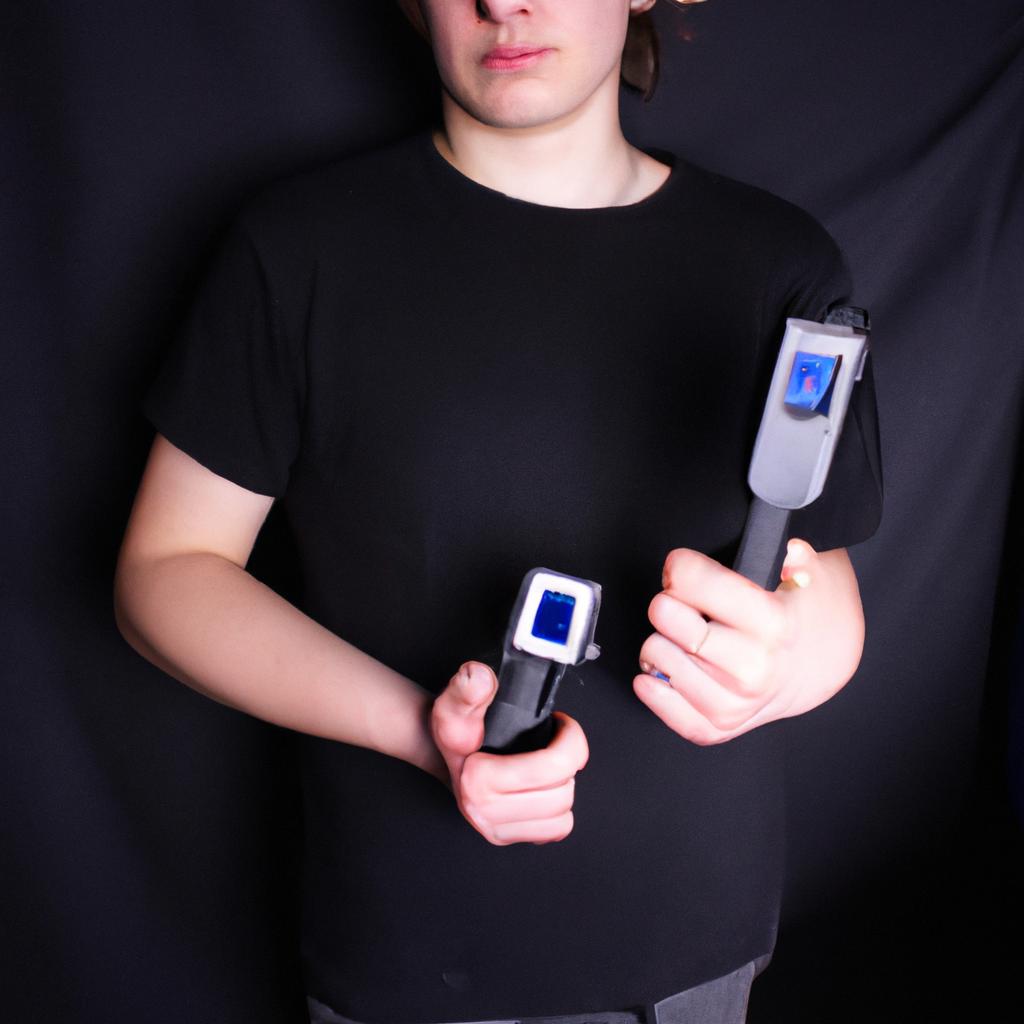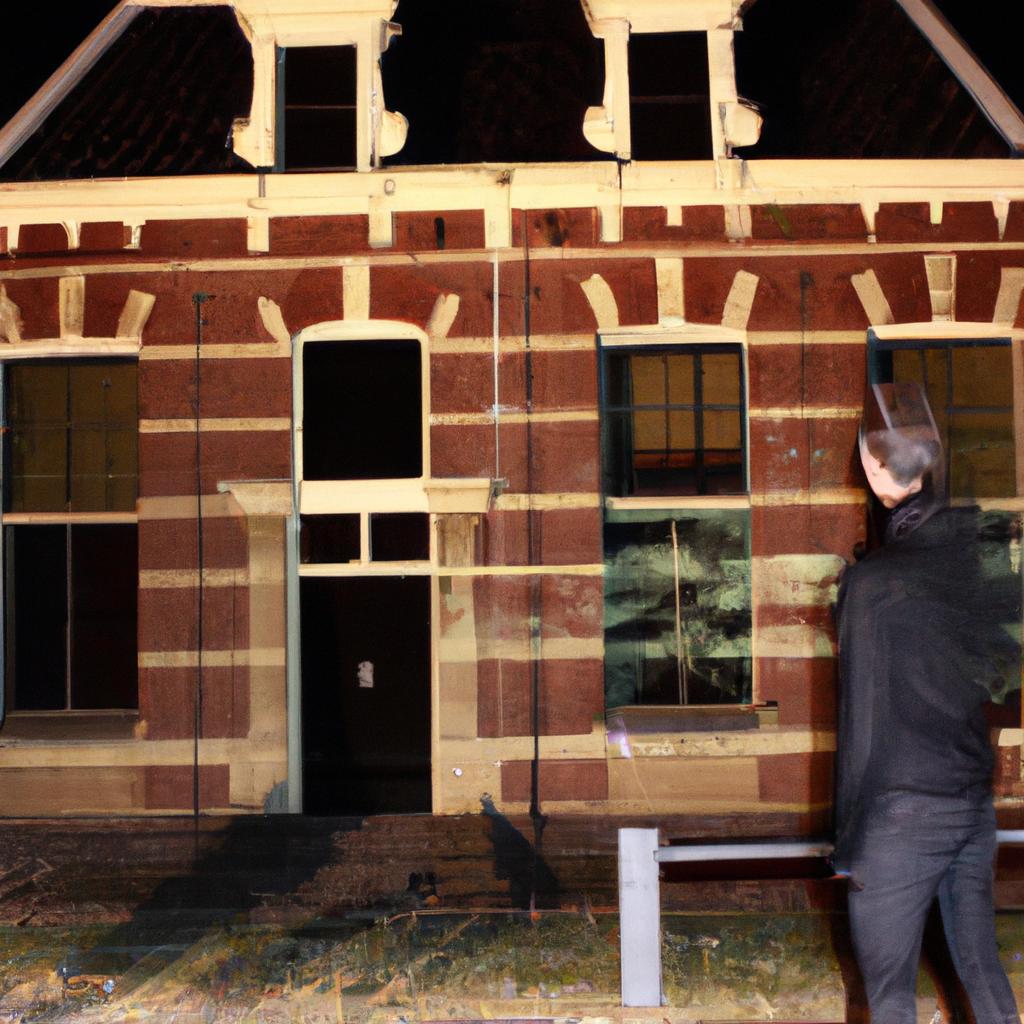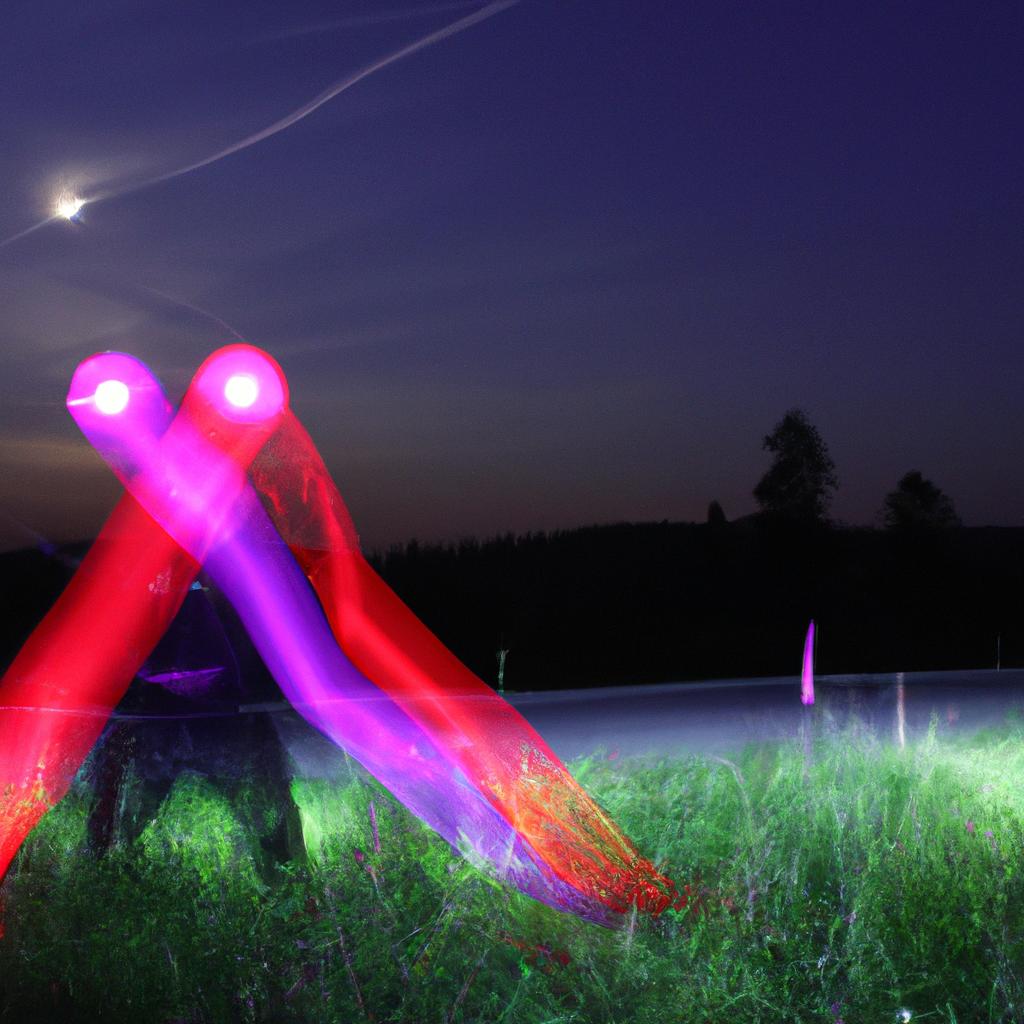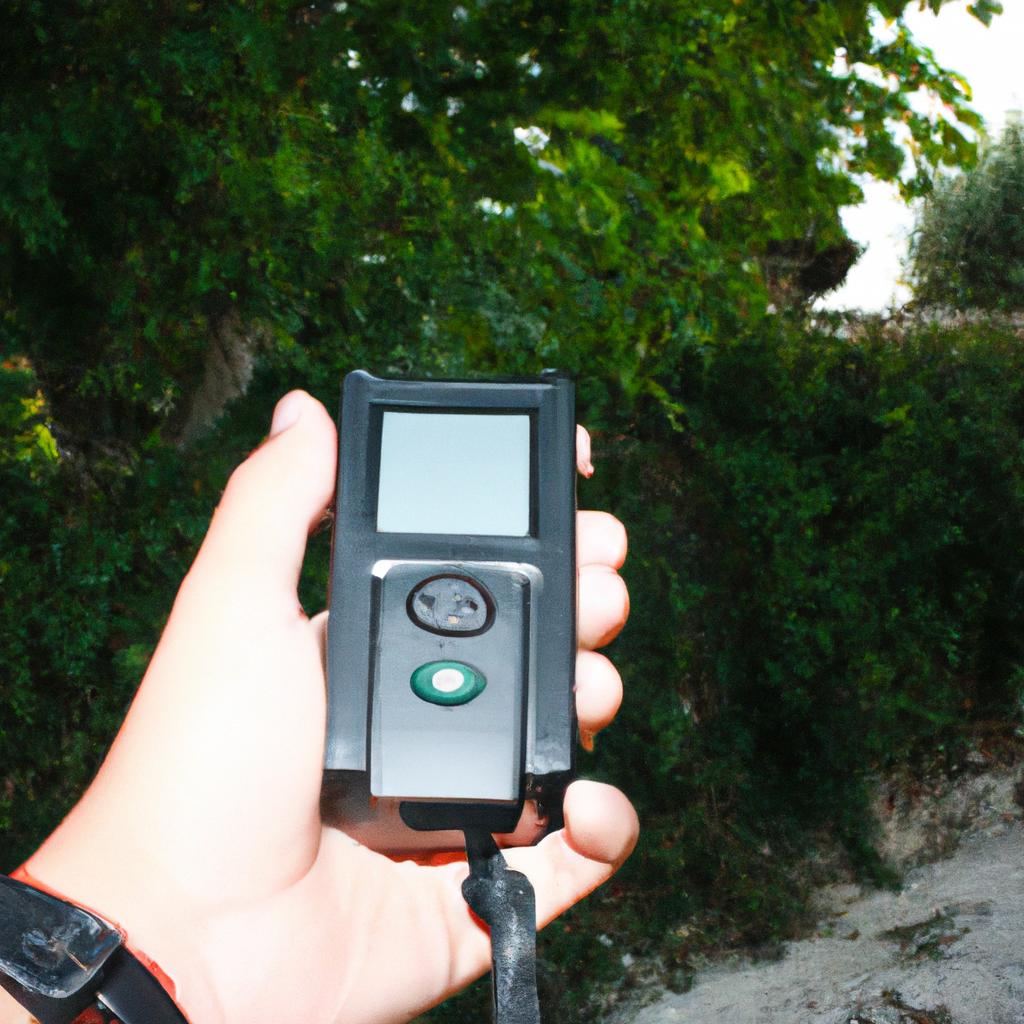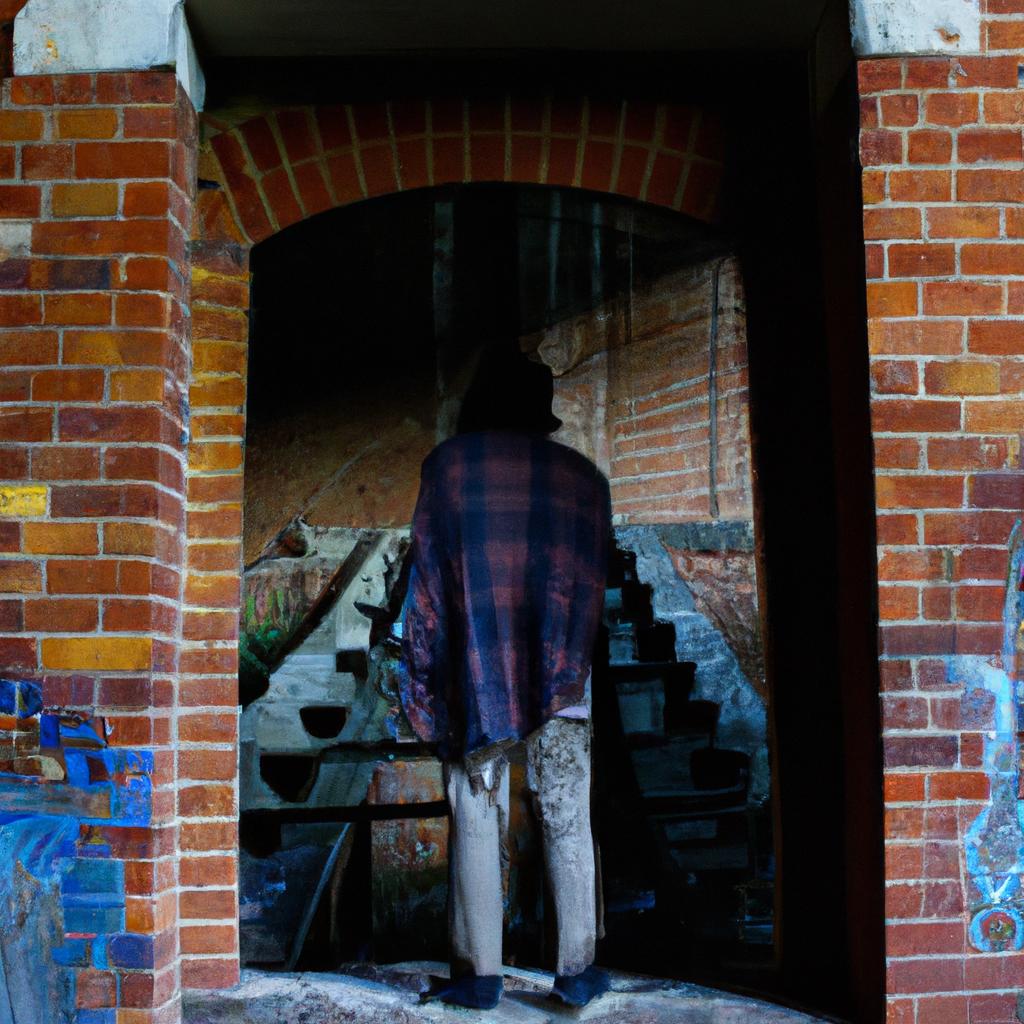Shadow People: The Paranormal Ghost Phenomenon
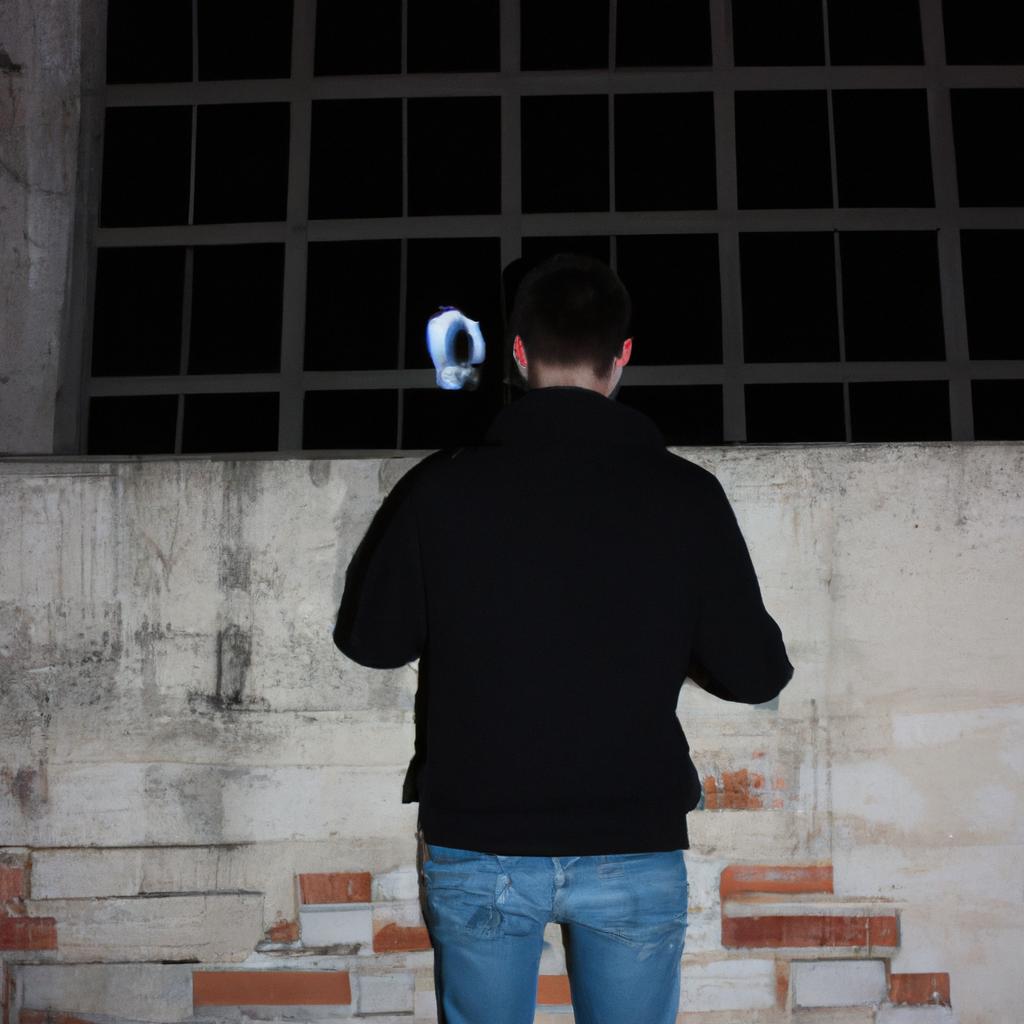
Shadow People: The Paranormal Ghost Phenomenon
In the realm of paranormal activity, one enigmatic phenomenon that has captured the attention and curiosity of many is that of shadow people. These elusive entities are believed to be ghostly apparitions that manifest in the form of dark shadows or silhouettes, often seen out of the corner of one’s eye or in peripheral vision. Countless accounts from individuals across different cultures and time periods have described encounters with these mysterious figures, leaving researchers and skeptics alike perplexed as they attempt to unravel their true nature and significance.
For instance, consider a hypothetical scenario where an individual finds themselves alone at night in an old Victorian house. As they navigate through dimly-lit hallways, they suddenly catch sight of a fleeting figure darting into a nearby room. Curiosity piqued, they explore further only to find no trace of any physical being occupying the space. Such experiences have been reported by numerous witnesses who describe encountering shadow people under similar circumstances. While it is easy to dismiss such occurrences as mere figments of imagination or tricks played by light and shadow, there exists a substantial body of anecdotal evidence suggesting otherwise – prompting us to delve deeper into this intriguing paranormal phenomenon.
The purpose of this article The purpose of this article is to explore the phenomenon of shadow people, examining different theories and explanations that have been put forth by researchers and experts in the field of paranormal activity. By delving into the various accounts and experiences shared by individuals who claim to have encountered these mysterious figures, we aim to shed light on their possible origins, nature, and significance within the realm of ghostly phenomena. Additionally, we will discuss common characteristics associated with shadow people sightings and provide insight into how they have been interpreted across different cultures and belief systems.
What are Shadow People?
What are Shadow People?
Shadow people, also known as shadow beings or dark entities, are a paranormal phenomenon that has intrigued and terrified individuals for centuries. These elusive figures appear as dark human-like silhouettes with no discernible facial features or distinguishing characteristics. They often manifest in one’s peripheral vision, disappearing when directly looked at. While some dismiss them as mere figments of the imagination or tricks of the eye, numerous accounts from credible witnesses suggest otherwise.
One example that illustrates the chilling nature of shadow people is the case of Sarah Thompson (pseudonym), a 37-year-old woman living in rural Pennsylvania. Late one evening while alone in her home, Sarah noticed movement out of the corner of her eye. Turning to look, she saw a tall figure standing by her bedroom door. The entity appeared solid black and seemed to emit an unnerving aura. Frozen with fear, Sarah watched as it slowly disappeared into thin air before her eyes.
To better understand this eerie phenomenon, let us delve into some key aspects surrounding shadow people:
- Perception: Witnesses commonly describe encountering shadow people during periods of low lighting or darkness. Intriguingly, these entities often seem more prevalent during episodes of heightened emotional distress or exhaustion.
- Behavior: Shadow people typically exhibit peculiar behavior such as watching silently from afar, darting across rooms or hallways, or even lurking menacingly at the foot of beds. Some eyewitnesses report feeling an overwhelming sense of dread and malevolence emanating from these apparitions.
- Encounters: Experiences involving shadow people vary widely among individuals who claim to have encountered them. Reports range from brief glimpses lasting only seconds to prolonged interactions spanning several minutes or even hours.
- Cultural Perspectives: Throughout history and across cultures worldwide, stories and beliefs concerning shadow people have been shared through folklore and mythology. Although interpretations may differ depending on cultural context, there is a common thread of fear and unease associated with these shadowy entities.
| Perception | Behavior | Encounters |
|---|---|---|
| Low lighting or darkness | Watching silently from afar, darting across rooms or hallways, lurking menacingly at the foot of beds | Brief glimpses lasting seconds to prolonged interactions spanning minutes or hours |
In conclusion, shadow people are a perplexing paranormal phenomenon that has captured the imagination of many. Despite their elusive nature, numerous accounts suggest they may be more than mere illusions. The next section will explore the different types of shadow people encountered by witnesses, shedding light on their diverse characteristics and manifestations.
Types of Shadow People
Uncovering the various types of shadow people is crucial in understanding their paranormal ghost phenomenon. While each type may share certain characteristics, they also possess distinct features that set them apart from one another. Let us explore some of the most commonly encountered types and delve into their unique attributes.
One prevalent type of shadow person is known as the Hat Man. Often described as a tall figure wearing an old-fashioned hat, this entity exudes an air of authority and malevolence. Witnesses have reported feeling intense fear and unease when encountering the Hat Man, often associating his presence with a sense of impending doom.
Another type is the Watcher. These shadow beings are characterized by their silent observation of individuals or places for extended periods without any apparent purpose. Their mere presence can evoke feelings of being watched or monitored, leaving those who encounter them with a deep sense of discomfort and vulnerability.
The third category consists of Inanimate Shadows. Unlike other types that exhibit humanoid forms, these shadows take on shapes resembling objects such as furniture or everyday items like hats or coats hanging on hooks. Despite lacking human-like qualities, witnesses report feeling threatened or disturbed by these seemingly mundane entities.
Lastly, we have the Shadow Animals. This classification encompasses shadows that imitate animals rather than humans. Common examples include shadow cats or dogs seen darting across rooms or lurking in dark corners. Witness accounts reveal a mix of fascination and trepidation towards these phantom creatures.
To further illustrate the impact these different types of shadow people can have on individuals, consider the following emotional responses:
- Fear: The Hat Man’s ominous presence instills terror in witnesses.
- Unease: The Watcher’s constant surveillance creates a lingering sense of discomfort.
- Discomfort: Inanimate Shadows’ uncanny resemblance to everyday objects induces uneasiness.
- Fascination: Shadow Animals provoke both intrigue and caution due to their non-human form.
Table showcasing emotional responses:
| Type | Emotional Response |
|---|---|
| Hat Man | Fear |
| Watcher | Unease |
| Inanimate Shadows | Discomfort |
| Shadow Animals | Fascination, caution |
In understanding the different types of shadow people and their associated emotional responses, we can now explore the common characteristics that tie them together. By examining these shared traits, a clearer picture emerges of the nature and behavior of these enigmatic entities.
Transitioning to the next section about “Common Characteristics of Shadow People,” it is evident that unraveling these patterns will provide valuable insight into comprehending this paranormal ghost phenomenon.
Common Characteristics of Shadow People
In exploring the phenomenon of shadow people, it is essential to understand the various types that have been reported by eyewitnesses. One notable example is the Hat Man, a specific type of shadow person commonly described as wearing an old-fashioned hat and a long coat. Reports suggest that this particular entity often instills a sense of fear and unease in those who encounter it.
Understanding the different manifestations of shadow people can help shed light on their nature and possible origins. While experiences may vary, several common characteristics have emerged from numerous accounts:
- Dark Silhouette: Shadow people are typically seen as dark silhouettes without any discernible facial features or distinct body parts.
- Humanoid Shape: Although lacking specific details, these entities generally appear in a humanoid form, with two legs and arms.
- Disappearing Act: Witnessed shadows often display the ability to vanish suddenly or dart out of sight when noticed.
- Negative Aura: Many individuals report feeling intense negative emotions when encountering shadow people, such as dread, anxiety, or even a sense of impending doom.
These shared characteristics provide valuable insights into the nature and behavior of shadow people. By examining them more closely through case studies and testimonies, researchers hope to unravel the mystery surrounding these enigmatic figures.
Table: Common Characteristics of Shadow People
| Characteristic | Description |
|---|---|
| Dark Silhouette | Lack of distinct facial features or visible body parts |
| Humanoid Shape | Typically appearing in a form resembling human proportions |
| Disappearing Act | Sudden vanishing or swift movement out of sight |
| Negative Aura | Eliciting strong negative emotions like fear, anxiety, or foreboding |
By delving deeper into these key aspects, we can gain further understanding regarding why encounters with shadow people continue to captivate our collective imagination and generate a wide range of emotions. Historical accounts and folklore offer valuable context for comprehending the broader cultural significance of these phenomena, which will be explored in the subsequent section.
Building upon our knowledge of the types and characteristics of shadow people, we now turn to historical accounts and folklore that shed light on their enduring presence throughout human history.
Historical Accounts and Folklore
The phenomenon of shadow people has a long history rooted in various cultures and belief systems around the world. Throughout centuries, there have been numerous historical accounts and folklore that describe encounters with these enigmatic entities. One such example is the case of Mary, a middle-aged woman living in a small village in England during the late 18th century.
Mary reported seeing shadowy figures lurking outside her window every night for several weeks. These shadows appeared to move swiftly and silently, causing an eerie sensation within her. Despite their lack of discernible features, she described feeling an intense sense of malevolence emanating from them. This experience left Mary terrified and sleep-deprived, as she feared what might happen if these shadow beings were able to breach the boundaries of her home.
Historical accounts and folklore pertaining to shadow people often share common characteristics that provide insight into this paranormal phenomenon:
- Shapeless Figures: Shadow people are typically described as formless silhouettes devoid of distinct facial features or bodily details.
- Dark Presence: Witnesses frequently report feelings of dread or fear when encountering these entities, suggesting an ominous aura surrounding them.
- Elusive Nature: Shadow people are known to move quickly and effortlessly, disappearing before any substantial interaction can occur.
- Nocturnal Activity: Many sightings take place at nighttime or in dimly lit areas, further adding to their mysterious nature.
To illustrate the prevalence of beliefs regarding shadow people across different cultures throughout history, consider the following table:
| Culture | Name | Description |
|---|---|---|
| Native American | Trickster | Mischievous spirits believed to bring chaos |
| Japanese | Kage-Onna | Female shadow figure associated with death |
| African | Tikoloshe | Malevolent creature responsible for nightmares |
| Celtic | Banshee | Female spirit associated with impending death |
These examples highlight the diverse interpretations and cultural significance attributed to shadow people throughout human history. While their exact origins remain a subject of debate, these entities continue to captivate our imagination and evoke a wide range of emotions within those who encounter them.
Transitioning into the subsequent section on scientific explanations for shadow people, it is imperative that we delve further into understanding this paranormal phenomenon through an objective lens. By exploring potential theories grounded in scientific principles, we can shed light on the enigma surrounding shadow people and provide alternative perspectives to consider.
Scientific Explanations for Shadow People
Section H2: Scientific Explanations for Shadow People
While historical accounts and folklore have provided fascinating insights into the phenomenon of shadow people, scientific explanations offer a different perspective that seeks to understand these manifestations through empirical evidence and rational analysis. By examining various theories put forth by researchers and experts in the field, we can explore possible reasons behind encounters with shadow people.
One prominent theory suggests that sightings of shadow people may be attributed to optical illusions or hallucinations caused by sleep deprivation or certain medical conditions. For instance, individuals experiencing sleep paralysis—a state where one is temporarily unable to move or speak upon waking up—have reported seeing dark figures looming over them. The mind’s attempt to make sense of this disorienting experience could manifest as the perception of shadowy entities.
Another explanation revolves around pareidolia, a psychological phenomenon wherein our brains perceive meaningful patterns in random stimuli. In low-light environments or when objects are partially obscured, our tendency to recognize familiar shapes might lead us to interpret shadows as human-like forms. This inclination towards pattern-seeking behavior can contribute to the creation of vivid apparitions that resemble shadow people.
Furthermore, some researchers propose that electromagnetic fields (EMFs) could play a role in generating experiences related to shadow people. EMFs are known to affect brain activity and may induce feelings of unease or anxiety in sensitive individuals. It is plausible that exposure to high levels of EMFs could influence neural processing, leading to perceptions of shadowy figures lurking within one’s surroundings.
To evoke an emotional response:
- Increased heart rate
- Heightened sense of curiosity
- Intrigued fascination
- Eerie sensations down the spine
The following table presents contrasting viewpoints on scientific explanations for shadow people:
| Theory | Explanation |
|---|---|
| Hallucination due to sleep deprivation | Sleep-deprived individuals may experience visual distortions and misinterpretations, perceiving shadow figures during episodes of exhaustion. |
| Pareidolia | The brain’s tendency to recognize patterns in ambiguous stimuli can lead to the interpretation of shadows as human-like shapes. |
| Electromagnetic field influence | High levels of electromagnetic fields may affect neural processing, potentially causing individuals to perceive shadowy entities. |
This scientific exploration of shadow people offers alternative perspectives that attempt to demystify these paranormal encounters. By considering factors such as sleep deprivation, pareidolia, and electromagnetic influences, researchers strive to uncover plausible explanations for this intriguing phenomenon.
Understanding the various scientific theories surrounding shadow people provides a solid foundation for further investigation into personal experiences and encounters with these mysterious entities.
Encounters and Personal Experiences
Transitioning from the previous section, where scientific explanations for shadow people were explored, we now turn our attention to real-life encounters and personal experiences with this paranormal phenomenon. To shed light on the subject, let us consider a hypothetical case study:
Imagine John, an ordinary individual living in a quiet suburban neighborhood. One night, while lying in bed, he suddenly becomes aware of a dark figure standing at the foot of his bed. This figure is featureless yet distinctively humanoid in shape. It appears to be observing him silently before fading away into nothingness. Such encounters are reported by individuals who claim to have experienced sightings of shadow people.
Encountering shadow people can evoke various emotions and feelings, ranging from curiosity to fear or even awe. Here are some common emotional responses associated with these otherworldly apparitions:
- Intrigue: The mysterious nature of shadow people sparks intrigue among believers and skeptics alike.
- Fear: Many encounter witnesses report feeling intense fear when faced with the presence of shadow figures.
- Awe: Some individuals describe their experience as awe-inspiring due to the inexplicable nature of encountering supernatural entities.
- Uncertainty: Shadows’ ambiguous existence leaves individuals questioning what they truly encountered.
To provide further insight into different types of encounters, consider the following table summarizing key characteristics reported by those who claim to have come face-to-face with shadow people:
| Encounter Type | Description |
|---|---|
| Peripheral | Brief glimpses out of the corner of one’s eye |
| Looming | Figures appearing large and looming over observers |
| Staring | Shadow beings intently staring at individuals |
| Sleep Paralysis | Encountered during episodes of sleep paralysis, where individuals are temporarily unable to move |
These categories represent a fraction of the diverse range of experiences reported by individuals who believe they have encountered shadow people. The phenomenon continues to captivate and intrigue those fascinated by the paranormal.
In exploring encounters with shadow people, it becomes evident that personal experiences provide invaluable insights into this enigmatic phenomenon. Through these encounters, individuals often grapple with a mix of emotions while attempting to comprehend the inexplicable nature of these ghostly entities.

